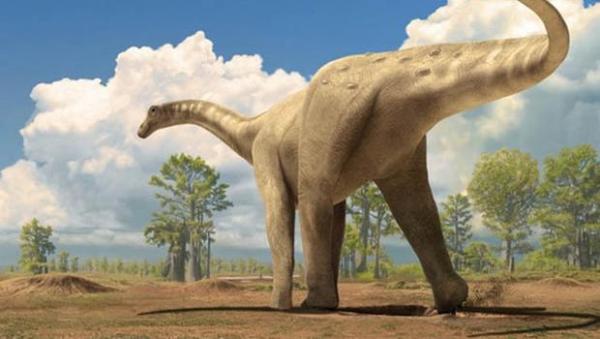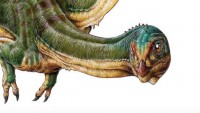New Dinosaur Unearthed In Alaska
| Antara Dutta Choudhury | | Sep 22, 2015 07:39 PM EDT |
According to a new research report, fossils of herbivorous dinosaur in Alaska have been unearthed.
A new research published in Ata Paleontologica Polonica confirms the presence of herbivorous dinosaur in Alaska. The animal was a duck-billed dinosaur that roamed in herds.
Researchers declared it to be a 30-feet long herbivorous dinosaur after a thorough investigation of the bones at the Coville River in northern Alaska known as the Prince Creek Formation. According to the researchers it was one of more than a dozen of species of dinosaurs that lived in the northern part.
Like Us on Facebook
With the help of the speakers of Inupiaq, language of Alaska Inupiat Eskimos, research workers have named the creature Ugrunaaluk kuukpikensis ( oo-GROO'-nah-luk KOOK'-pik-en-sis ) . The name means "ancient grazer" in Inupiaq.
The northern Alaska was probably a much more hospitable place with approximate temperature of 45 degrees Fahrenheit and was thought to be covered by forests.
"For at least 25 years, the fossils were lumped in with another hadrosaur, Edmontosaurus, a species well-known in Canada and the U.S., including Montana and South Dakota. The formal study of the Alaska dinosaur revealed differences in skull and mouth features that made it a different species," said Patrick Druckenmiller, a vertebrate paleontologist at the University of Alaska who helped find the fossils, in an interview for the Los Angeles Times.
CBS News reported, researchers believe The Prince Creek Formation is teeming with skeletons of at least 13 different species of dinosaur, which are different than those found at lower latitudes.
"When we think of dinosaurs, we think of them living in a tropical paradise, but for these dinosaurs, it was more like an Arctic paradise. It was probably comparable to what you would find in Juneau, Alaska, down in the panhandle of the state. It wasn't a warm winter, but it was much warmer than it is today," he said.
Small teams of paleontologists have toiled for 10 to 14 days to gather thousands of bones from the Prince Creek Formation, with around 6,000 bones only from Ugrunaaluk kuukpikensis.
"It's the one we know better than any other," Druckenmiller said. "We have every bone in its body."
TagsDinosaur Fossils, Herbivorous Dinosaur, Dinosaur in Alaska, Northern Alaska
©2015 Chinatopix All rights reserved. Do not reproduce without permission
EDITOR'S PICKS
-

Did the Trump administration just announce plans for a trade war with ‘hostile’ China and Russia?
-

US Senate passes Taiwan travel bill slammed by China
-

As Yan Sihong’s family grieves, here are other Chinese students who went missing abroad. Some have never been found
-

Beijing blasts Western critics who ‘smear China’ with the term sharp power
-

China Envoy Seeks to Defuse Tensions With U.S. as a Trade War Brews
-

Singapore's Deputy PM Provides Bitcoin Vote of Confidence Amid China's Blanket Bans
-

China warns investors over risks in overseas virtual currency trading
-

Chinese government most trustworthy: survey
-

Kashima Antlers On Course For Back-To-Back Titles
MOST POPULAR
LATEST NEWS
Zhou Yongkang: China's Former Security Chief Sentenced to Life in Prison

China's former Chief of the Ministry of Public Security, Zhou Yongkang, has been given a life sentence after he was found guilty of abusing his office, bribery and deliberately ... Full Article
TRENDING STORY

China Pork Prices Expected to Stabilize As The Supplies Recover

Elephone P9000 Smartphone is now on Sale on Amazon India

There's a Big Chance Cliffhangers Won't Still Be Resolved When Grey's Anatomy Season 13 Returns

Supreme Court Ruled on Samsung vs Apple Dispute for Patent Infringement

Microsoft Surface Pro 5 Rumors and Release Date: What is the Latest?












